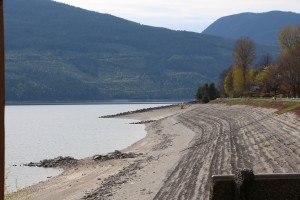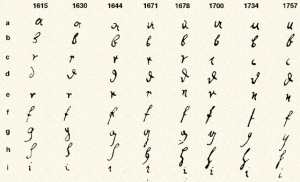The prompt this week:
“Each student will be assigned a section of the novel Green Grass Running Water (pages will be divided by the number of students). The task at hand is to first discover as many allusions as you can to historical references (people and events), literary references (characters and authors), mythical references (symbols and metaphors).”- Dr. Erica Paterson
The pages that I was assigned were pages 41-45, in the copy I am using it matches up to pages 66-75. Everything that will be cited will be used from the copy that I am using.
Page 67: The tape recorder was making squeaky noises, as though something deep in the mechanism was slipping.
This passage makes you think about what they want you to think about here. Which noise it is truly making? The one that there could be many answers to, is there something wrong with the machine, or is there something that is just stuck that needs to be loosened.
Page 68: “I don’t know…four, five hundred years…”
This is referring to in Indians; they aren’t able to make a reference to age because they look older than what they actually are. Saying that once you get to a certain point, over seventy or eighty, age doesn’t matter you just look old, this is very racist. Saying that with these people you aren’t able to tell anything because at some point they all look alike because that is who they are.
Page 72: Mr. Red, Mr. White, Mr. Black, and Mr. Blue.
This is an interesting sentence just for the use of colors. People are often defined by the colors of their skin “The white man or the black man”. Having the extra colors in there is trying to making something funny that actually had meaning behind the derogatory slag that it could be used for. Most the time when you are considered by the color of your skin it isn’t for the purpose that everyone is wanting.
Page 73: We used to talk, you know, life, kids, fixing the world. Stuff like that.
In this place in the text the men are talking about a group of people, and they are women because of the things that they are taking about. They are talking about their lives and children, and how they what they are going to do with their lives. And through this talk they are automatically assumed that they are women because no man would ever be caught talking about these things, as they aren’t seen as “manly”. Even though later someone mentions that “the files say the Indians were men” and the reply is “Suit yourself”. Just proving how stereotypical these men are as they won’t relate to this group because they act different.
Page 74: “Enough of this dog and pony show,”
This is a common colloquial term that relates to meaning highly promoted, often over-staged performance, presentation or event designed to sway and convince opinions.
In this expression Cereno is using it to make a statement, he wants them to be aware that he is over what they are doing and is going to do his own this. As if the thing that he is about to go to is more important and more relevant than what everyone else is doing.
Work Cited.
King, Thomas. Green Grass Running Water. Toronto: Harper Collins, 1993. Print.
Paterson, Erika. “Lesson 3:5.” ENGL 470A Canadian Literary Genres May 2015. U of British Columbia. Web. 26 June 2015.

 understand the concept of home. My parents fought all the time, my dad drank and my mother just tolerated it. There aren’t many memories of when I was younger that we truly felt like a family in a home. After my parents became divorced, we were all learning to cope, and were moving from place to place, never finding that one place that I could feel truly fit in. When you keep changing schools it is hard to settle into who you are supposed to be. I have lived in eleven different houses, and not one has really felt like a home. Once my parents remarried, they seemed more at peace with their choices, yet I still couldn’t find a place that I felt at “home” in. As I grow older I find the idea of having a traditional home, with all the fancy, sleek and modern items make me uncomfortable and feel like I don’t belong.
understand the concept of home. My parents fought all the time, my dad drank and my mother just tolerated it. There aren’t many memories of when I was younger that we truly felt like a family in a home. After my parents became divorced, we were all learning to cope, and were moving from place to place, never finding that one place that I could feel truly fit in. When you keep changing schools it is hard to settle into who you are supposed to be. I have lived in eleven different houses, and not one has really felt like a home. Once my parents remarried, they seemed more at peace with their choices, yet I still couldn’t find a place that I felt at “home” in. As I grow older I find the idea of having a traditional home, with all the fancy, sleek and modern items make me uncomfortable and feel like I don’t belong.
 his group of people were the only ones known to this world, besides the animals of course. They were created to take care of the place that they lived in and not cause harm to anyone or anything. Inevitably, not all rules are followed.
his group of people were the only ones known to this world, besides the animals of course. They were created to take care of the place that they lived in and not cause harm to anyone or anything. Inevitably, not all rules are followed.
